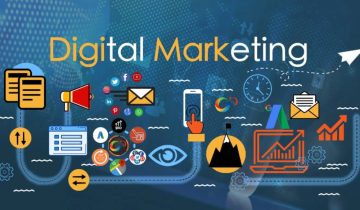As the world grapples with the urgent need to combat climate change and reduce greenhouse gas emissions, the importance of transitioning to renewable energy sources has never been clearer. Renewable energy technologies are rapidly evolving, offering innovative solutions to meet the growing demand for clean and sustainable energy. In this article, we’ll explore some of the latest innovations in renewable energy technology that are driving the transition to a green future.
1. Solar Power Revolution:
Solar energy continues to lead the renewable energy revolution, with advancements in photovoltaic (PV) technology driving down costs and increasing efficiency. Innovations such as perovskite solar cells, which are cheaper and more flexible than traditional silicon-based cells, hold promise for further reducing the cost of solar energy production. Additionally, solar tracking systems and concentrated solar power (CSP) plants are enhancing the efficiency and reliability of solar power generation, making it a viable alternative to fossil fuels in both urban and remote areas.
2. Wind Energy Innovation:
Wind energy has emerged as a major player in the renewable energy landscape, with technological advancements driving the development of larger and more efficient wind turbines. Innovations such as offshore wind farms and floating wind turbines are expanding the potential for wind energy generation in regions with abundant wind resources. Furthermore, advancements in turbine design, blade technology, and predictive maintenance systems are improving the performance and reliability of wind energy systems, making them more competitive with conventional energy sources.
3. Energy Storage Solutions:
The integration of energy storage systems is critical for maximizing the potential of renewable energy sources such as solar and wind power. Innovations in battery technology, such as lithium-ion batteries and flow batteries, are enabling efficient and cost-effective energy storage solutions for both grid-scale and distributed applications. Additionally, emerging technologies such as hydrogen storage and thermal energy storage offer promising alternatives for long-duration energy storage and grid stability, further enhancing the reliability and resilience of renewable energy systems.
4. Smart Grid Technologies:
The transition to renewable energy requires modernizing the electricity grid to accommodate fluctuating energy generation and demand patterns. Smart grid technologies, including advanced metering infrastructure (AMI), grid automation, and demand response systems, enable real-time monitoring and control of electricity flows, optimizing grid efficiency and reliability. Additionally, blockchain-based peer-to-peer energy trading platforms empower consumers to participate in the renewable energy economy by buying, selling, and trading excess energy generated from rooftop solar panels or wind turbines.
5. Bioenergy Innovations:
Bioenergy, derived from organic materials such as biomass, biofuels, and biogas, offers a versatile and sustainable energy source with the potential to reduce reliance on fossil fuels. Innovations in bioenergy technologies, such as advanced biofuel production processes and bioenergy crops engineered for higher yields and energy content, are driving the development of a low-carbon bioeconomy. Additionally, bioenergy combined with carbon capture and storage (BECCS) technologies can play a crucial role in negative emissions strategies, helping to mitigate climate change by removing carbon dioxide from the atmosphere.
6. Integration of AI and IoT:
Artificial intelligence (AI) and the Internet of Things (IoT) are revolutionizing the renewable energy sector by enabling predictive analytics, optimization, and automation of energy systems. AI algorithms analyze vast amounts of data from sensors and smart devices to optimize energy generation, distribution, and consumption in real-time. IoT-enabled smart grids, smart buildings, and smart appliances facilitate demand-side management and energy efficiency, empowering consumers to make informed choices and reduce their carbon footprint.
conclusion, renewable energy technologies are driving the transition to a green future by offering innovative solutions to address the challenges of climate change and environmental degradation. From solar and wind power to energy storage, smart grids, bioenergy, and AI-driven optimization, these innovations are reshaping the global energy landscape and paving the way for a sustainable and prosperous future for generations to come.




 No products in the cart.
No products in the cart. 